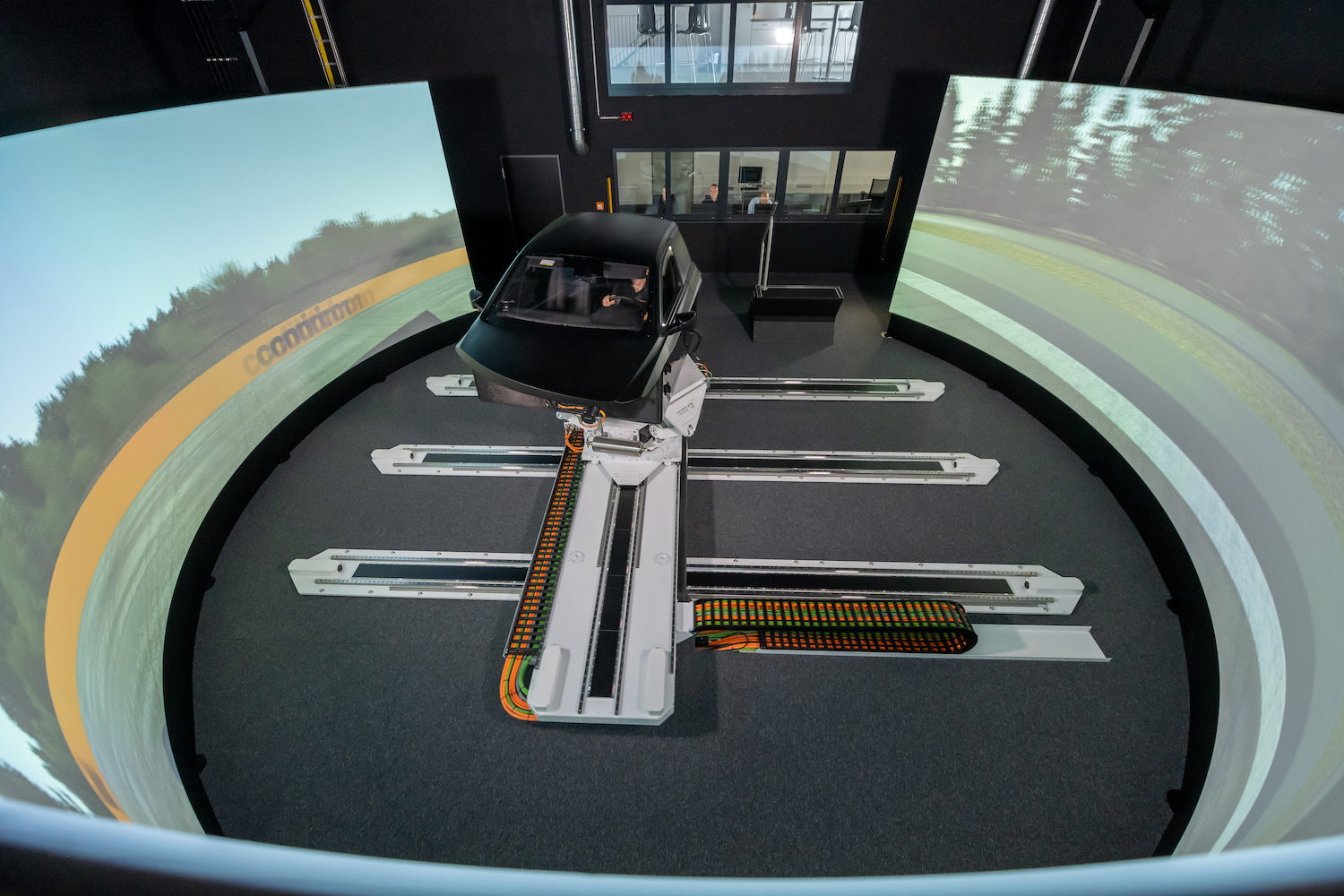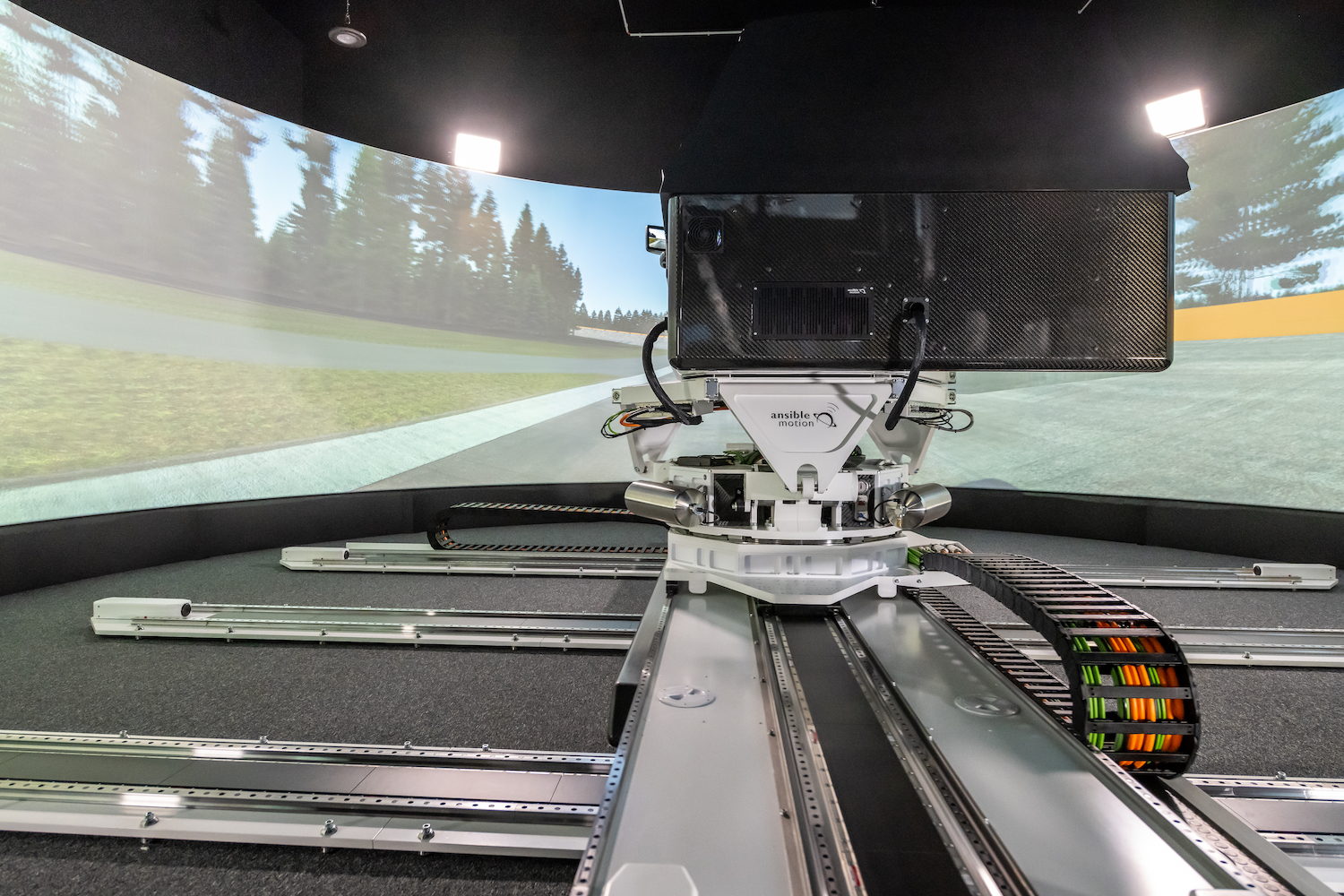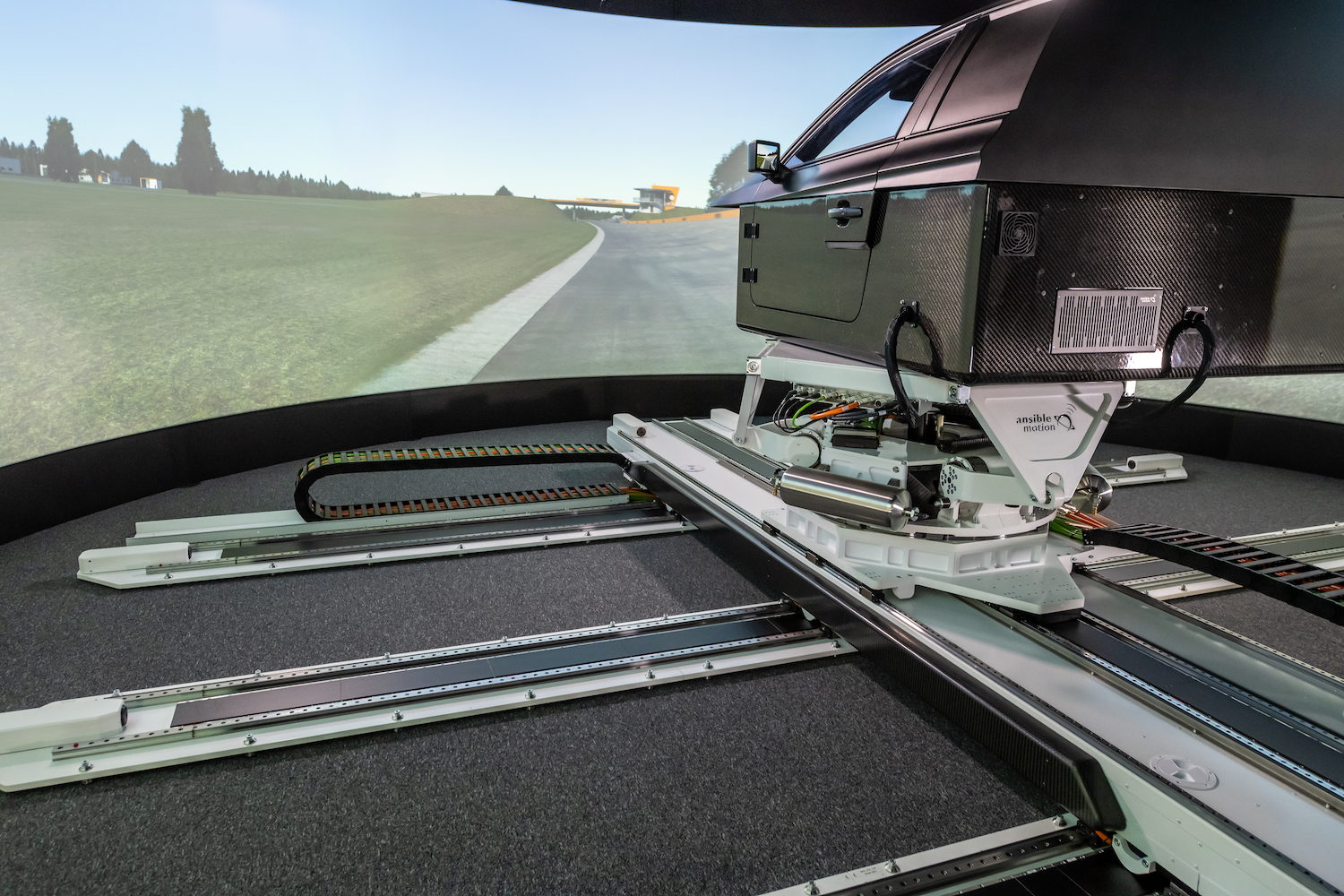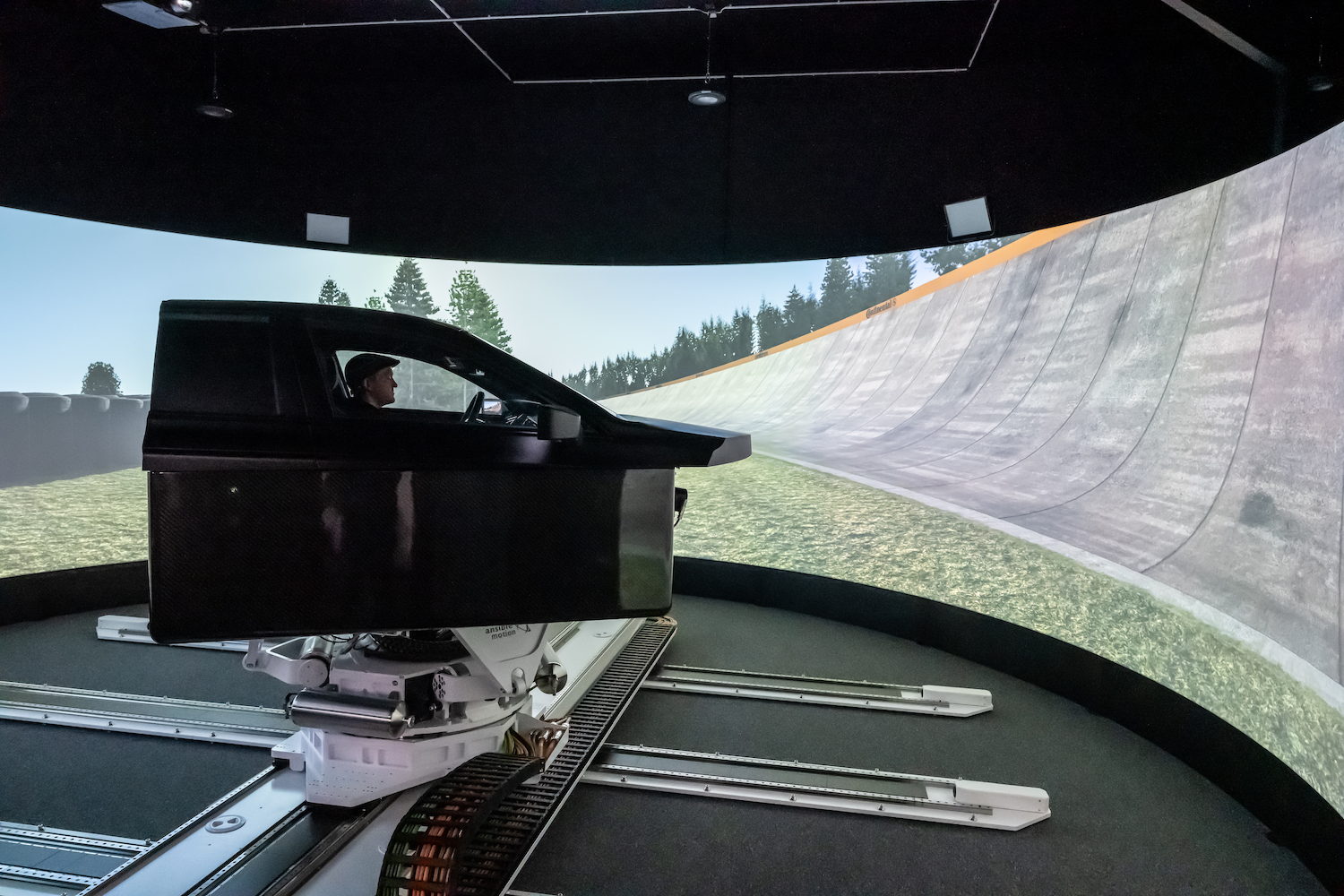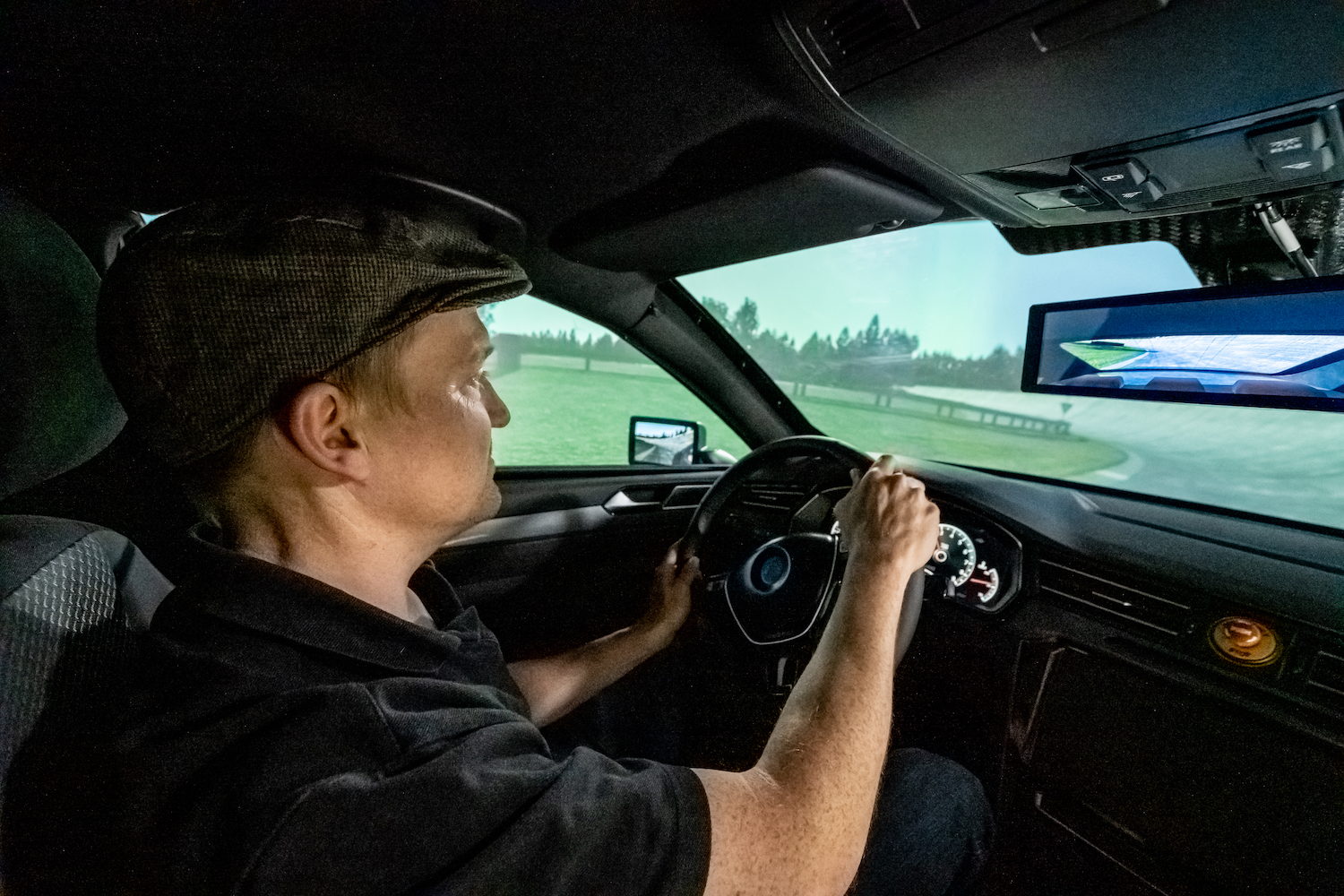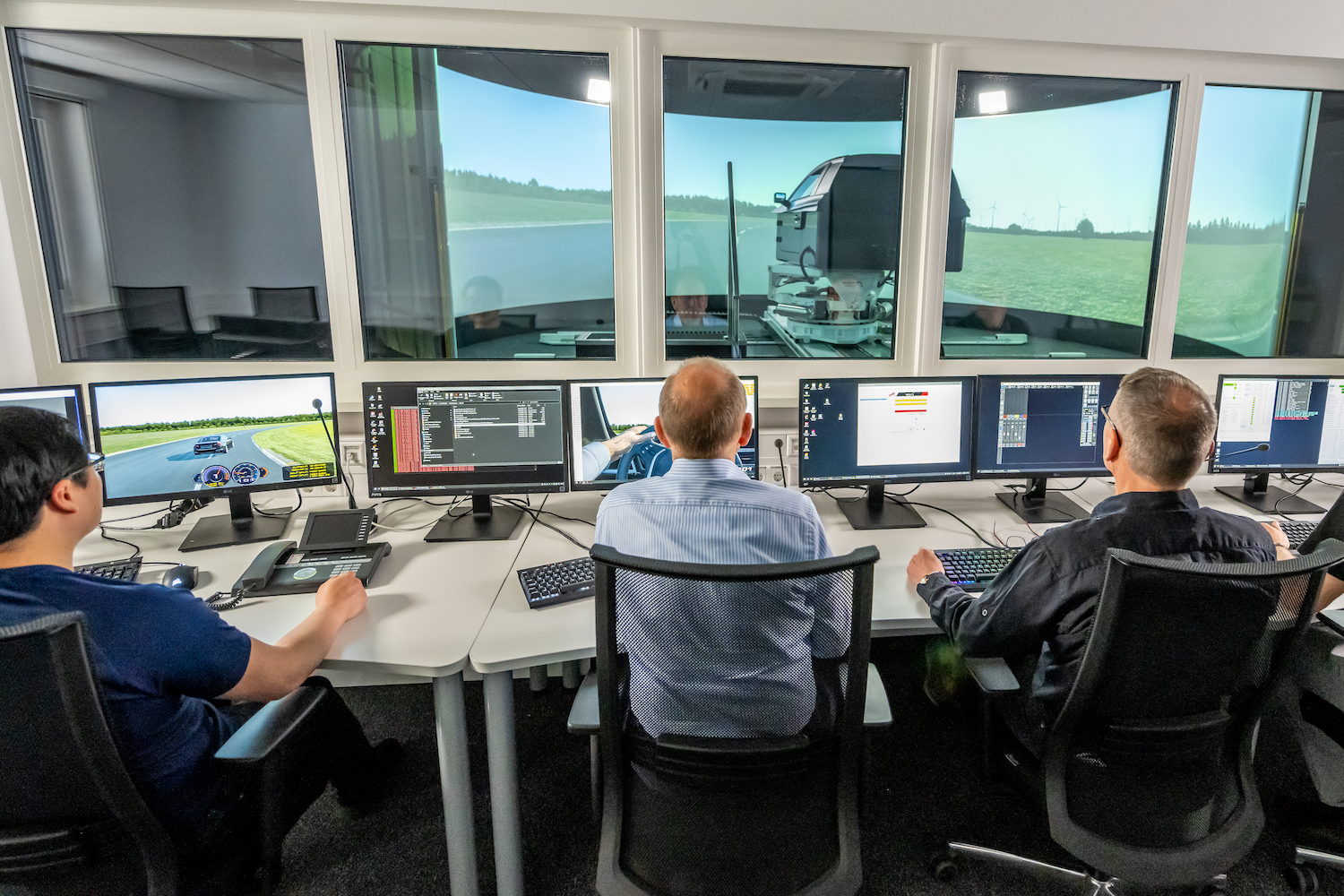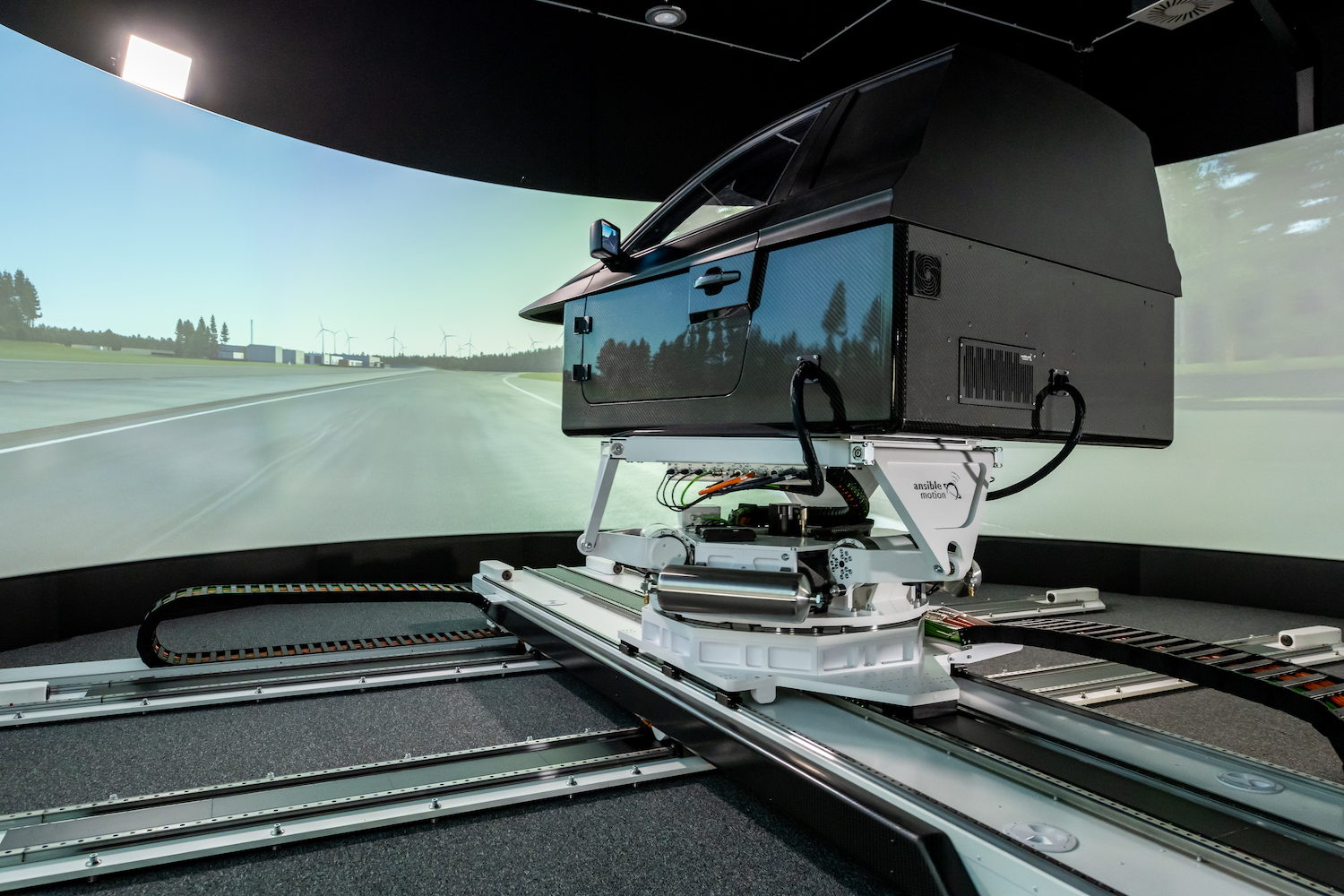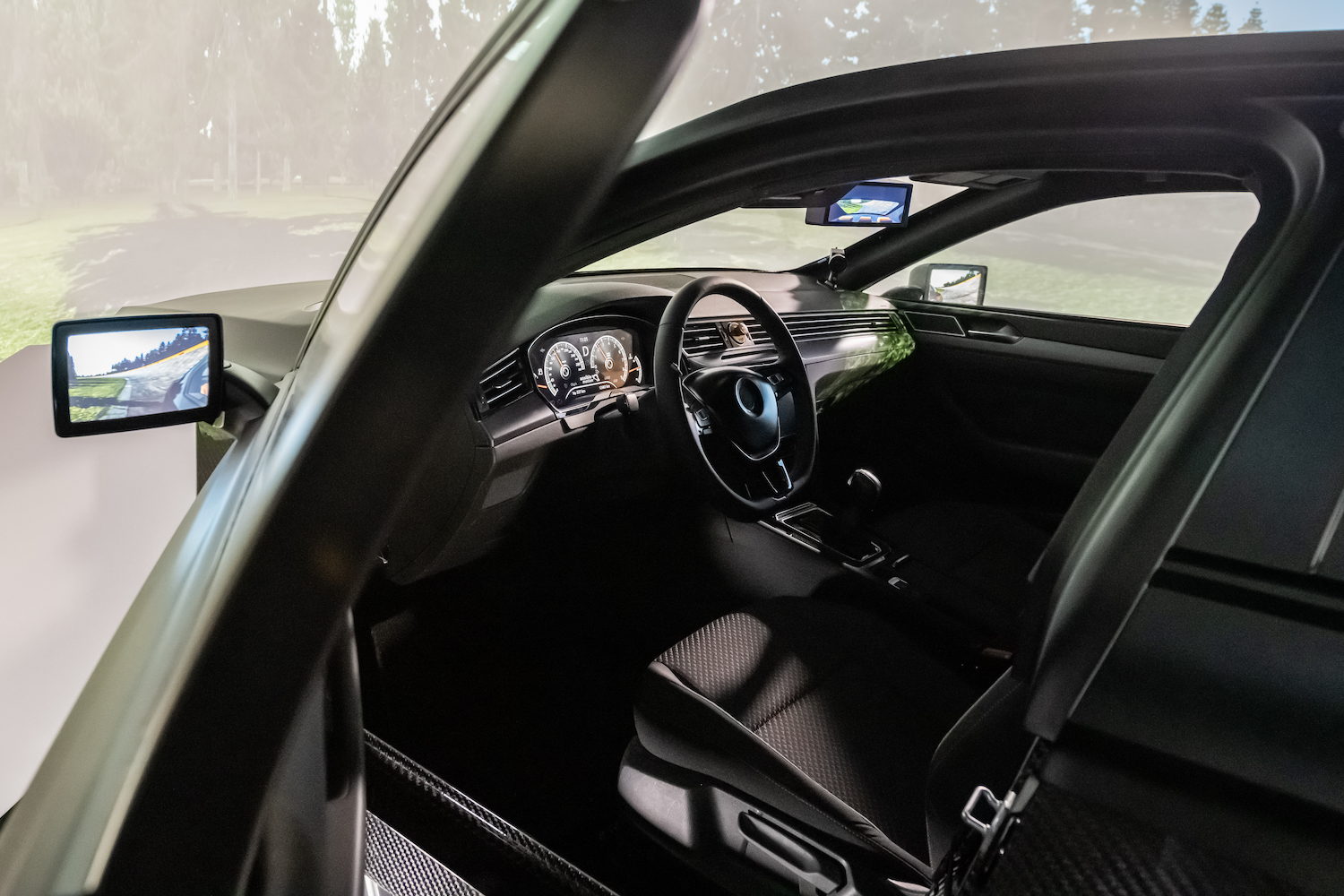Developing new tyres can be a costly and time-consuming process, taking up to three years from concept to production. Continental claims to be one of the leaders in tyre technology, employing about 57,000 people just in its tyre division and in 2022 generated sales of €14 billion. Tyres are big business. To stay ahead of the development curve, Continental has begun using an advanced driving simulator at its expansive Contidrom development facility on the outskirts of Hannover in Germany. During a recent visit, Continental demonstrated to CompleteCar.ie how the simulator speeds up tyre development time while reducing the firm's environmental impact.
The driving simulator Continental uses is Ansible Motion's Delta S3, providing a motion space measuring four by five metres. It is the same type of simulator used by Honda's Research and Development division and BMW. Looking like a blend of flight simulator and indoor drive-in movie theatre, today it features a full-size front cabin from a Volkswagen Passat mounted to a dynamic sled that moves though six axes in the same way that the car would out in the real world.
A wraparound screen almost surrounds the entire room and uses numerous high-definition projectors to create a virtual world to drive through, entirely filling the driver's field of view. Screens replace the rear-view and door mirrors that accurately reflect the rearward view and add a further touch of reality. We watch as the engineer drives down a simulated motorway. As they change lanes, the cabin they sit in leans and moves in the same way as a car would in the physical world with impressive fluidity.
Speeding up moves them forward to add the sensation of being pushed back into the seat. It does the opposite as they brake and reduce speed. The system can deliver acceleration beyond 1G and speeds above five metres per second to reflect more extreme driving scenarios that would otherwise be done on a handling circuit in the real world.
In a room overlooking the simulator, a team of engineers can observe all the data being generated across a bank of monitors, including a fully digitised rendering of the car as it drives through its environment with the same kind of data overlay you would expect from the latest computer game.
The data profile of any model can be loaded into the system, allowing the driver to experience anything from a city car to a sports car or SUV in a way that is claimed to be truly representative of the vehicle in the real world. Continental has other driving cabins that can be installed onto the simulator platform when required. The same extensive data bank of tyre models can also be loaded and combined with different environmental conditions ranging from surface grip to weather.
With the traditional method of tyre development, when a new design was created, Continental would have to build prototypes, usually carved by hand, at greater time and cost. These would then have to be driven over huge distances as part of the development process to examine how the tyre operated in the real world. That would involve drivers spending hours, days and weeks in different locations around the world, from hot weather testing in places like Arizona to sub-zero conditions in northernmost Scandinavia. It can be an exhaustive process that can carry significant costs.
Sometimes a tyre design won't achieve the desired results during the testing phase, requiring the engineers to return to the drawing board, create a modified design and begin the process again. The simulator can now highlight many of these results before ever making a physical tyre, which not only reduces material use but can also reduce the overall time it takes to approve a new design for production.
"Developing and testing premium tyres is a highly complex, time-intensive process. By using the new dynamic driving simulator, we will make this development process even more efficient in the future," says Dr Boris Mergell, Head of Research and Development of the Tyres business area.
"We want to actively shape the virtual development process in the automotive industry in the tyre sector as well. The new simulator combines state-of-the-art technology with the vast experience of our professional test drivers. Continental is one of the pioneers in the use of this innovative, hybrid test technology,"
The simulator now makes a massive difference in development time, costs and environmental impact. Before making a single prototype tyre, it can be driven virtually in the simulator to discover any imperfections or issues before moving to the physical stage of development.
Continental says that the simulator means using approximately 10,000 fewer sets of test tyres each year, cutting the required materials and resources. That also means that its development team has to spend less time driving on the road, a decrease of around 100,000 kilometres per year. That also saves on resources and cuts down emissions output since vehicles are being driven over shorter distances on the road and test track.
"Until now, the final tuning of tyres to real-life application scenarios always required the construction of a large number of test tyres. The aim is to have to build significantly fewer such prototypes in the future thanks to the simulator," said Dr Holger Lange, Head of Passenger Tyre Development.
It's all part of Continental's goal to be the most progressive tyre manufacturer in terms of environmental and socially responsible business practices by 2030. Continental's target is that by 2050, at the latest, its whole tyre product portfolio will be produced exclusively from sustainable materials and its supply chain will be completely climate-neutral.

